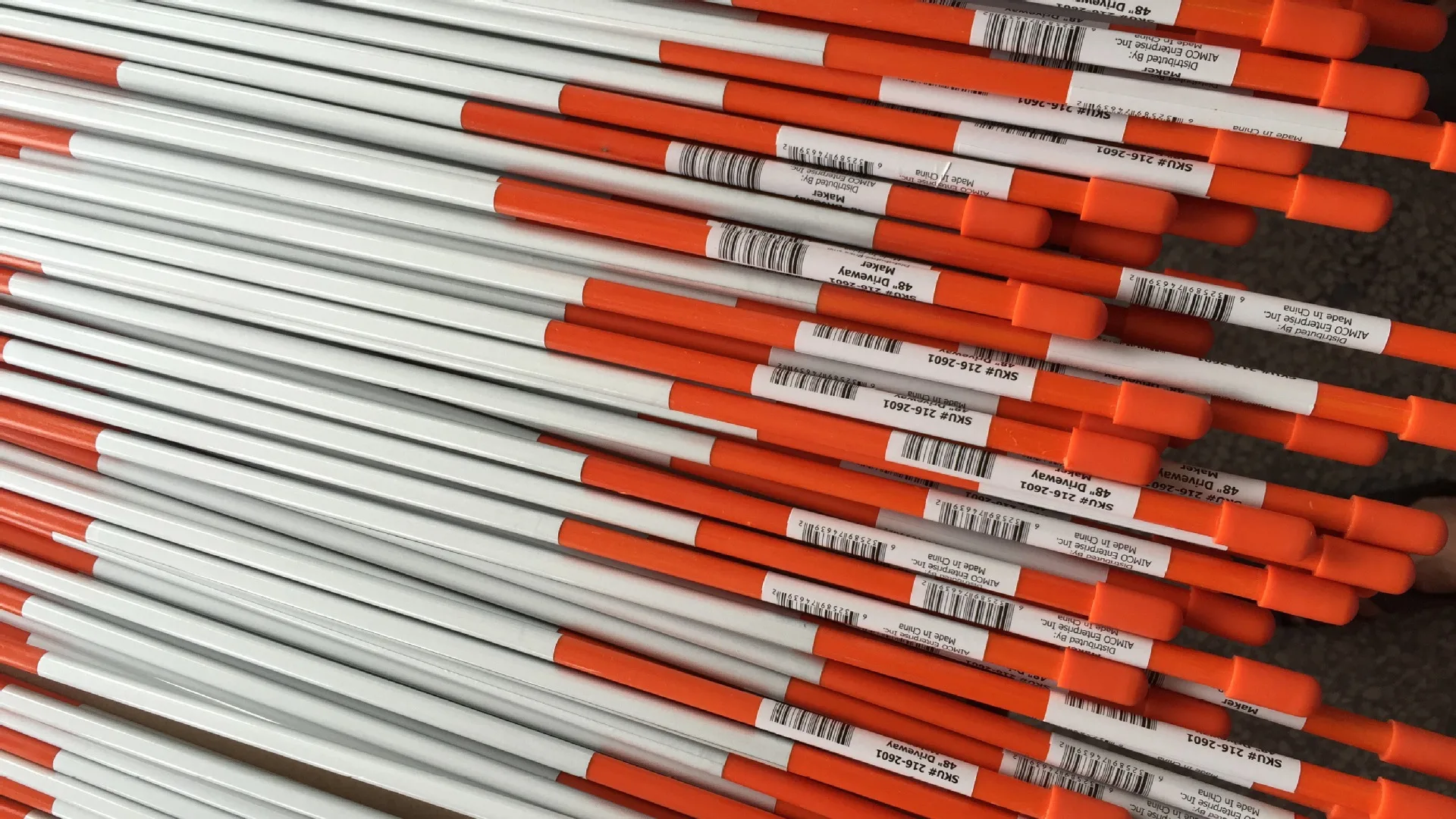Introduction
Fiberglass snow markers are an essential winter safety tool, designed to help you navigate and mark boundaries in heavy snow conditions. Whether you are marking driveways, walkways, or roads, these durable and highly visible markers ensure you and others can safely move around without losing sight of critical paths. In this guide, we will explore the various benefits of using fiberglass snow markers, how to install them properly, and maintenance tips to ensure they last throughout the winter season and beyond.

fiberglass snow markers
What Are Fiberglass Snow Markers?
Fiberglass snow markers are poles made primarily from fiberglass, a material known for its strength and durability. These markers are commonly used in snowy regions to outline driveways, roads, and other paths to guide vehicles and pedestrians safely. Fiberglass is chosen over other materials because it is lightweight, resistant to extreme weather, and flexible enough to withstand high winds and heavy snowfalls without breaking.
Benefits of Fiberglass Snow Markers
Fiberglass snow markers offer several advantages over traditional snow markers made from wood or metal. First and foremost, they are incredibly durable. Unlike wood, fiberglass does not rot, and unlike metal, it does not rust, making it ideal for harsh winter conditions. These markers are also highly visible, often painted in bright colors that stand out even during heavy snowfall, ensuring that your boundaries remain clear. Additionally, fiberglass snow markers are eco-friendly, requiring less frequent replacement and reducing waste.
How to Install Fiberglass Snow Markers
Installing fiberglass snow markers is a straightforward process that can be done in a few simple steps:
- Choose the Right Location: Identify areas where visibility is crucial, such as driveway edges, pathways, and roadways.
- Mark the Spot: Using a measuring tape, mark spots where the markers will be placed, typically 3-4 feet apart.
- Insert the Marker: Push the fiberglass marker into the ground until it is securely embedded, ensuring about two-thirds of the marker is visible above ground.
- Secure the Marker: For areas with loose or rocky soil, you may need to use a mallet to drive the marker deeper into the ground.
By following these steps, you can ensure that your snow markers remain firmly in place throughout the winter.
Maintenance Tips for Fiberglass Snow Markers
Maintaining fiberglass snow markers is relatively simple due to their durability. Regularly check the markers for any signs of wear, such as fading colors or bending, and replace them as needed. At the end of the winter season, clean the markers with a damp cloth to remove any dirt or debris before storing them in a dry, sheltered area. Proper storage will prolong their lifespan, ensuring they are ready for use in the next winter.
Conclusion
Fiberglass snow markers are a smart investment for anyone living in snowy regions. Their durability, visibility, and low maintenance requirements make them an ideal choice for marking important boundaries and ensuring winter safety. If you haven’t already, consider incorporating fiberglass snow markers into your winter safety toolkit. For more information or to purchase high-quality fiberglass snow markers, visit our recommended suppliers today.




























